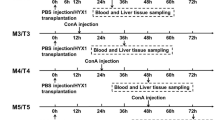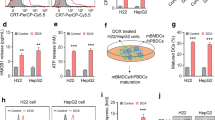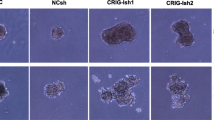Abstract
Objective
To study the immunologic function of dendritic cells (DCs) cultured in two kinds of hepatoma cell line’s supernatant and the enhancing effects of carboxymethylpachymaran (CMP) on DCs.
Methods
DCs were harvested after stimulation by granulocyte-macrophage colony-stimulating factor (GM-CSF) and interleukin (IL)-4 from umbilical cord blood using density-gradient centrifugation method. Cultured supernatant of two hepatoma cell lines (HepG2 and HepG2.2.15) were collected for condition medium (CM) according to a volume ratio of supernatant to incomplete RPMI-1640 medium, which was 3:1. CMP was dissolved in incomplete RPMI-1640 medium. Experimental groups were divided according to the culture medium, either CM or with CMP in it. DCs subsets CD83, CD86, CD1a, and d-related human leukocyte antigens (HLA-DR) were analyzed by flow cytometry. The proliferation ability of allogeneic T cells in mixed lymphocyte reaction (MLR) stimulated by DCs was examined by 3-(4,5-dimethylthiazol-2-yl)-2,5-diphenyltetrazolium bromide (MTT) analysis. IL-12p70, interferon-γ (IFN-γ), and nuclear factor κB (NF-κB) were detected by enzyme-linked immunosorbent assay analysis.
Results
The proliferation of lymphocytes and secreting level of IL-12 and expression of phenotype of DCs cultured in two kinds of CM were lower than those of normal group (P <0.01). Compared with the normal group, groups treated with CMP showed a higher expression level of DCs subsets, lymphocyte reproductive activity, as well as IL-12 and IFN-γ secretion levels. Groups treated with CMP also demonstrated higher levels of DCs phenotype expression and IL-12 and IFN-γ secretion in supernatant of MLR and higher lymphocyte reproductive activity compared with CM group (P <0.05). Compared with the normal group, the expression level of NF-κB in DCs nuclear was higher in CMP groups but lower in two CM groups (P <0.05). After CMP was added, the NF-κB expression levels of two CM groups were increased compared with levels before CMP was added (P <0.05). However, there was no significant difference between the two CM groups (P >0.05).
Conclusions
Two kinds of hepatoma cell line’s supernatant can inhibit the immunologic function of DCs. This suppressive effect may be related to the inhibition of NF-κB/Rel pathway. CMP may up-regulate the DCs function by activating the NF-κB/Rel pathway.
Similar content being viewed by others
References
Parkin DM. Global cancer statistics in the year 2000. Lancet Oncol 2001;2:533–543.
Akbar FM, Horiike N, Onji M, Hino O. Dendritic cells and chronic hepatitis virus carriers. Intervirology 2001;44:199–208.
Qiu SJ, Lu L, Qiao C, Wang L, Wang Z, Xiao X, et al. Induction of tumor immunity and cytotoxic t lymphocyte responses using dendritic cells transduced by adenoviral vectors encoding HBsAg: comparison to protin immunization. J Cancer Res Clin Oncol 2005;131:429–438.
Caux C, Liu YJ, Banchereau J. Recent advances in the study of dendritic cells and follicular dendritic cells. Immunol Today 1995;16:2–4.
Zhang YX, Zan YL, Shan M, Liu CM, Shi M, Li M, et al. Effects of heat shock protein gp96 on human dendritic cell maturation and CTL expression. Biochem Biophys Communicat 2006;344:581–587.
Eli Gilboa. How tumors escape immune destruction and what we can do about it. Cancer immunology, Immunotherapy 1999;48:382–385.
Pardoll D. T cells and tumors. Nature 2001;411:1010–1012.
Smyth MJ, Godfrey DI, Trapani JA. A fresh look at tumor immunosurveillance and immunotherapy. Nat Immunol 2001;2:293–299.
Lee KY, Jeon YL. Polysaccharide isolated from poria cocos sclerotium induces NF-κB/Rel activation and iNOS expression in murine macrophages. Int Immunopharmacol 2003;3:1353–1362.
Qian S, Shi M, Zhang H, Zhang B, Xu DP, Wang FS. Phenotype and function of myeloid dendritic cells pulsed with hepatitis B virus antigens in patients with HBV-associated hepatocellular carcinoa. Nat Med J China (Chin) 2005;85:248–252.
Kakumu S, Ito S, Ishikawa T, Mita Y, Tagaya T, Fukuzawa Y, et al. Decreased function of peripheral blood dendritic cells in patients with hepatocellular carcinoma with hepatitis B and C virus infection. J Gastroenterol Hepatol 2000;15:431–436.
Shi M, Qian S, Chen WW, Zhang H, Zhang B, Tang ZR, et al. Hepatitis B virus (HBV) antigen-pulsed monocytederived dendritic cells from HBV-associated hepatocellular carcinoma patients significantly enhance specific T cell responses in vitro. Clin Exp Immunol 2006;147:277–286.
Yu P, Spiotto MT, Lee Y, Schreiber H, Fu YX. Complementary role of CD4+ T cells and secondary lymphoid tissues for cross-presentation of tumor antigen to CD8+ T cells. J Exp Med 2003;197:985–995.
Cuenca A, Cheng F, Wang H, Brayer J, Horna P, Gu L, et al. Extra-lymphatic solid tumor growth is not immunologically ignored and results in early induction of antigen-specific T-cell anergy: dominant role of cross-tolerance to tumor antigens. Cancer Res 2003;63:9007–9015.
Spiotto MT, Fu YX, Schreiber H. Tumor immunity meets autoimmunity: antigen levels and dendritic cell maturation. Curr Opin Immunol 2003;15:725–730.
Steinman RM, Hawiger D, Nussenzweig MC. Tolerogenic dendritic cells. Annu Rev Immunol 2003;21:685–711.
Lu SC, Cao QL, Zhang L. Effect of pachymaran on immunologic function of normal and tumor-bearing mice. J First Milit Med Univ (Chin) 1990;10:267–268.
Macatonia SE, Hosken NA, Litton M, Vieira P, Hsieh CS, Culpepper JA, et al. Dendritic cells produce IL-12 and direct the development of Th1 cells from naive CD4+ T cells. J Immunol 1995;154:5071–5079.
Author information
Authors and Affiliations
Corresponding author
Additional information
Supported by the National Natural Science Foundation of China (No. 30973693) and the Research Fund for the Doctoral Program of Higher Education of China (No. 20104401110003)
These authors contributed equally to this work
Rights and permissions
About this article
Cite this article
Chen, Z., Yu, B., Wu, Xl. et al. Carboxymethylpachymaran enhances immunologic function of dendritic cells cultured in two kinds of hepatoma carcinoma cell line’s supernatant via nuclear factor κB/Rel pathway. Chin. J. Integr. Med. 18, 203–208 (2012). https://doi.org/10.1007/s11655-011-0943-4
Received:
Published:
Issue Date:
DOI: https://doi.org/10.1007/s11655-011-0943-4




